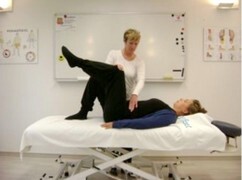Therapies
English
our
therapies
Respiratory therapy
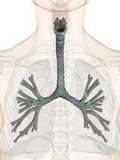
The respiratory therapy trains the breathing technique, strengthens the respiratory muscles and serves mobilizing the secretion.
It is used when having a lung disease, such as asthma, pneumonia
COPD (chronic obstructive pulmonary disease) and after surgery, such as removal of part of the lung.
Pelvic training

Pelvic rehabilitation trains specific muscles, which are hidden inside the pelvic structure. This training is possible, as with any other muscle too.
It needs professional guidance and the expertise of the physiotherapist, in order to train and tone the right muscles.
A weak pelvic can lead to many problems. Pregnancy, childbirth, pelvic surgery, overweight and hormonal changes,
often leads to a subsidence of the bladder, uterus or rectum. This can lead to urinary or rectum incontinence.
Regular pelvic training strengthens, tones and counteracts incontinence. The training can also be used as a preventive measure.
more information
Home treatment
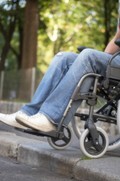
Obstacles in your Home, physical disability or current health problems can prevent you to reach our practice.
When medically prescribed, costs for home treatment will be covered by your basic health insurance and you can be attended to at home.
Ergonomics

An important part of physiotherapy is instruction and guidance of everyday movements,
such as sitting at the computer, domestic work, lifting and lowering heavy articles and a lot more.
Individual counselling and adaption of therapeutic appliances can reduce health problems significantly.
more information
Kinematic

Mrs Dr. med. h.c. Susanne Klein-Vogelbach laid the foundation for a highly differentiated examination and
analysis of constitutions, postural stability, gait pattern and other sequences of motion.
She developed efficient treatment techniques and numerous functional exercises (including the large therapy ball),
which we are still valuable today and have been developed further.
If, due to deviation from normality, physical straining and discomfort occur, we can identify and treat this.
With passive techniques (e.g. mobilizing massage) and specific exercises,
we can solve the problem and train a better posture and optimize the coordination of motion.
The therapy is versatile: it can be used in training the posture, exercise the back (also for children and youth),
in workplace ergonomics, for rehabilitation after injuries, accidents, in orthopaedic surgery or rheumatic and
orthopaedic diseases and also for prevention.
more information
Kinesthetic
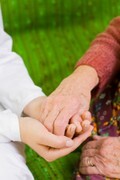
The kinaesthetic concept serves and promotes the individual movement skills in everyday life.
The existing physical resources are being used and developed.
This is a positive approach for nursing care and patients whose rehabilitation has just been completed.
The patient learns how to move, despite his disability and how to be aware and make use of his own movement capacities.
more information
Kinesio taping

Contrary to the conventional tape, kinesio taping allows movement to the full extent. It is elastic and acts like the skin.
Kinesio taping is used after an exact diagnosis and indication, supportive to other forms of therapy.
Kinesio taping is a very efficient technique in physiotherapy and in sports. It is used individually
and as a complementary measure in a wide variety of problems and physical ailments.
Here some applications:
Back pain, joint pains, instability of the joints, muscle tension, muscle tears, tendonitis, edema, hematoma and scar treatment.
It can support relaxation or activation of the muscles, depending on a person's disposition.
Through skin irritation, clear information is transported. This can help to correct misalignments and help you learn new movements easier.
Additionally it has a positive effect on blood circulation, metabolism and lymph transport, which supports the healing process.
The special material made from cotton wool with an acrylic layer is elastic. It allows air and
water to reach your skin and can be worn several days, even when showering or exercising.
Manual therapy

Treatment is done by hand (manual). We work in accordance with known methods such as
Kaltenborn / Evjenth (Germany) and Maitland (Australia).
The manual therapy is used for analysis and treatment of functional disorders of the spine,
peripheral joints, muscles and nerves. In the classical sense blockages are resolved with the help of
mobilizing techniques and painful movement restrictions alleviated.
The techniques are, as a rule, painless and are mostly used in combination
with other physiotherapeutic methods.
Massage techniques

We like to combine the classical massage with other treatment methods of physiotherapy.
Through our hands and with our experience we feel and loosen tense muscles, scar tissue,
adhesions of the conjunctive tissue. Thereby we stimulate blood circulation and cell metabolism.
The massage also affects the vegetative nervous system. Stress hormones are reduced,
blood pressure and pulse rate lowered. It improves body awareness and leads to physical
and mental relaxation. A massage is excellent for muscle tension, neck pain, tension headaches, back pains,
rheumatological ailments, after accidents and surgery, neurological and psychosomatic disorders.
Muscle balance
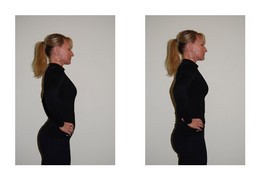
The goal is, to achieve a balance between lower and superficial muscles. Are these two systems out of balance,
then often strain, pain and damage to the spine and joints occur. Chronic back ache, even damage to the spinal disc,
arthritis and tendinitis may result. Often exact movement control and stabilization through the deeper muscle
layers are lacking. With a differentiated analysis, we can identify and treat this imbalance.
Movement control is optimized with specific exercises, whereby the deeper muscle layers are activated and
false strain is counteracted. Good results are achieved with this method in case of pain in the often
instable areas of lumbar and cervical spine and shoulder joints.
Neuro rehabilitation
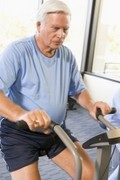
The Bobath concept is successfully used, when the central nerve system is affected, such as hemiplegia (hemiparesis),
which is associated with disorder of movement, paralysis and spasticity. It is a 24 hours concept, which includes,
apart from physiotherapeutic treatment, instructions for proper positioning of the patient,
rearranging the apartment and instructing helpers
- it should help the patient to relearn the lost ability to move again
- the improvement of the hemiplegic body part in coordination with the healthy one and regain the feeling for the body
- Spastic, abnormal posture and movement patterns can be inhibited
- Pain and shortening of the muscles can be prevented
- It promotes the best possible independence and safety in everyday life
more information
Thermal applications
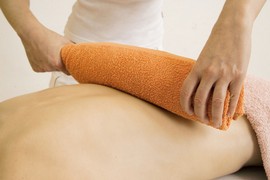
Heat applications
result in increased blood circulation in the skin, in the tissue and in the muscles.
They relax the muscles, improve the elasticity of the connective tissue and counteract tension pain.
As a supporting measure we apply these against tension in back, shoulder, neck and other affected areas.
Heat pack
The affected area is wrapped up in a dry heat pack and the heat is allowed to be absorbed for an extended period of time.
Hot roll
A moist and hot towel roll is rolled over tissue and muscles. This has, apart from the thermal, also a massage effect.
Cold applications (cryotherapy)
Ice rubbing or cold packs are mainly applied in the acute state of injuries and ailments. They reduce pain and blood circulation.
more information
Triggerpunkt - Therapie
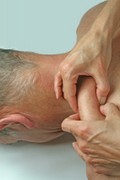
Trigger point therapy
The trigger point therapy is based on the findings of Janet G. Travell and David G. Simons.
Both authors have written the "manual of muscle trigger points", which is the standard work on this subject.
Chronic stress or direct trauma to the affected muscle structure is often the cause for a myofascial pain syndrome.
These provoke a malfunction of the link between nerve and muscle structure (motor end plate).
There extremely sensitive zones occur. These local pain areas, the so called myofascial trigger points,
are mostly easy to palpate in the hardened skeletal muscles.
Their mechanical irritation often leads to a pain transmission in other body regions (referred pain).
A suitable therapy can eliminate this pathology, even after a longer time period. Suitable treatment methods are:
the muscle and connective tissue techniques by B. Dejung from Switzerland,
release and stretching techniques by K. Lewits / V- Janda, as well as the trigger point acupuncture.
A trigger point is a localized palpable hardening in a muscle, which is painful to pressure and also propagates pain.
In scientific studies, Mrs Dr Janet Travell and Professor Dr David Simons from the USA, have discovered
typical trigger point pain patterns and thus the cause of man pains, which have their origin in muscles and
surrounding connective tissue. In this therapy the trigger point is pressed hard, whilst moving the muscle.
The patient determines the strength of the pressure and thus the resulting pain. Subsequently, the muscle and
the surrounding tissue are spread and additionally the muscle is being stretched.
The trigger point therapy is very effective in alleviating pain such as:
Tension head ache, pain of the musculoskeletal system which is caused
through chronic strain (unfavourable posture), though injuries or exposure to cold.
Dry neeling

Dry neeling is a special form of trigger point therapy. A thin needle (without medicaments and therefore "dry") is precisely
inserted into the trigger point. Thus, the local blood circulation is improved and tension loosened.
This is an effective supplement to the above mentioned manual technique.
more information
Ultrasound and electrotherapy
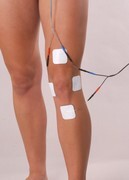
Ultrasound therapy
With a transducer head high frequency sound waves, inaudible to the human ear, are applied to the tissue.
The vibrations generate an increased blood circulation, relaxation and warmth in the treatment area.
They are hardly noticeable. The approximately 5 cm big transducer head is moved over the skin, with the aid of a gel.
This stimulates the blood circulation underneath the skin and also the cell metabolism. It relaxes muscle tension and
trigger points and is antispasmodic. Injuries to the muscles and inflammation of the tendons heal better.
Bruising reduces faster, fractures heal quicker through the stimulation of the tissue regeneration.
Ultrasound therapy is often used in combination with otter physiotherapeutic measures.
more information
TENS Transcutaneous electro nerve stimulation
This electro medical, low frequency stimulation therapy is manly used for pain relieve and improvement of
the blood circulation and against chronic pain. The electrodes are bonded in the vicinity of the pain area.
The current produces a slight, pleasant tingling. The aim is, to influence the nerves in such a way, that the pain
transmission to the brain is reduced or prevented. With a doctor's prescription and after a professional instruction
through the therapist, the patient then takes the leased equipment home. This device has then size of a cigarette
box and can be carried in the pocket. The therapy should be applied several times a day for about 30 minutes.



